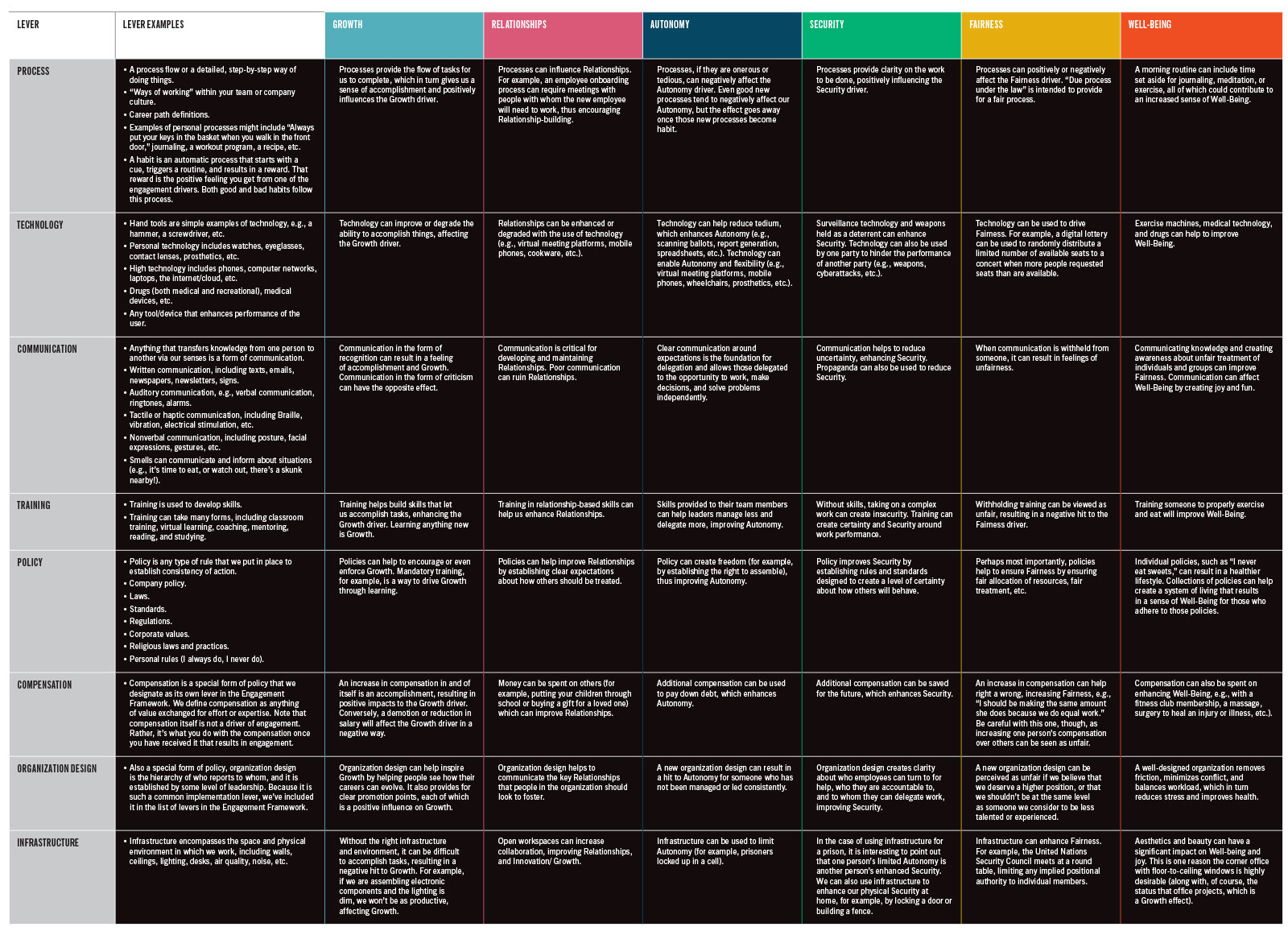Implementation levers are the management levers applied when we want to make change happen or when we want to influence change. They are the tools available to support the people who do the work in an organization and the tools we turn to first to get things done. There are eight implementation levers:
Process The flow and step-by-step tasks we follow.
Technology The tools we use.
Communications How we transmit knowledge and information.
Training How we learn and build skills.
Policy How we establish rules, clarify expectations, and set boundaries for acceptable behavior.
Compensation How we receive tangible value in exchange for effort and expertise.
Organization design How we establish lines of authority and accountability for work.
Infrastructure The physical environment in which we work.
Like each section of the Engagement Framework, these levers apply to individuals, teams, groups, organizations, and even society as a whole. Also like with each of the other sections, leaders should consider each implementation lever when undertaking any new project or transformation. Too often, we fail to consider all the levers at our disposal when driving improvement and change, whether in business or our personal lives. It is important to use all the tools at your disposal when attacking a particular challenge.
To help do that, the following table provides examples of the implementation levers and how they might affect the engagement drivers, either positively or negatively. As you can see, each of these levers can influence the engagement drivers in different ways. Creative application of these levers can result in a rich set of actions and ideas that will enhance any project, change, or transformation.

